order

Coleoptera
“Adult Beetles”

Coleoptera
“Larval Beetles”

Diptera
“True Flies”

Ephemeroptera
“Mayflies”

Hemiptera
“True Bugs”

Lepidoptera
“Aquatic Caterpillars, Snout Moths”

Megaloptera
“Alderflies, Dobsonflies, and Fishflies”

Odonata
“Dragonflies and Damselflies”

Plecoptera
“Stoneflies”

Trichoptera
“Caddisflies”
family
Stratiomyidae
genus
Odontomyia or Hedriodiscus
“Soldier Flies”
Genus Overview
31 species in North America. The larvae tend to be in organic muck and decaying vegetation. They need to breathe air by they two spiracles on the last abdominal segment.
Characteristics
POLLUTION TOLERANCE
0 = least tolerant, 10 = most tolerant
FEEDING HABITS
Collector / Filterer
Collector / Gatherer
Collector / Gatherer
MOVEMENT
Burrower
Sprawler
Sprawler
DISTRIBUTION
Widespread (east of the Rocky Mtns.)
HABITAT
Lentic-littoral
Lotic-depositional
Lotic-erosional
Lotic-depositional
Lotic-erosional
Diagnostic Characters
Order
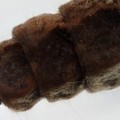
Legs Absent
Family
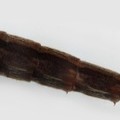
Body Flattened
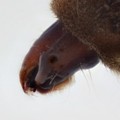
Head Capsule Sclerotized and Mostly Exposed

Leathery Integument
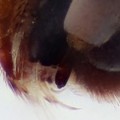
Mandibles Moving Vertically
Genus
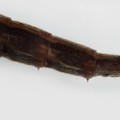
Ventral Curved Spines
+ Expanded Character List
Order:
Wings and wing pads absent. Eye spots sometimes visible, but compound eyes absent. Segmented legs absent, but sometimes fleshy prolegs present. Sometimes with distinct head, often without head or with head drawn deeply into thorax. Body flattened, cylindrical, or maggot-like.
Family:
Most of the head is conspicuous but nearly incapable of movement; it has distinctive lateral eye prominences; there are no segmented legs; the body is somewhat depressed and its integument is tough and leathery from calcium deposits.
Genus:
antennae at apex of eyes, curved spines on abdominal segments 6 and 7

Lateral



